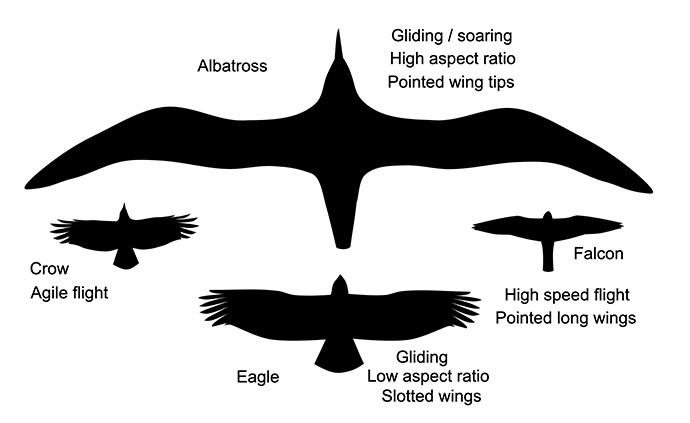Thanks for being here today. This email turned out to be fun to write. Hopefully you’ll enjoy it too. To begin, I have a list of STEM projects. You can do them with your kids over the holidays, to keep them busy when they’re off school and bored. I also found a really wonderful site, She Codes Robots, with projects. It’s geared towards girls but anyone any age might find them fun and easy to tweak. Plus an odd but silly thing about programming: naming strings. It includes camels, kebabs, trains, and screaming. Enjoy!
Holiday STEM Projects: The Lists
In the United States, tomorrow is Thanksgiving and the formal kickoff of the holiday season. If you have kids, likely you’ll be indoors trying to figure out how to keep them occupied for the long weekend. For the next few weeks, I’ve researched projects that you can do around the house that help teach kids learn about science, technology, engineering, art, and math. Today, to get started, I researched websites with lists of kid-friendly projects. Future Wednesday emails will focus on specific kinds of projects. Including projects that get kids outdoors.
Science Buddies
https://www.sciencebuddies.org/
Institution of Mechanical Engineers – Resources and Activities
https://www.imeche.org/careers-education/stem-at-home
https://www.imeche.org/careers-education/supporting-teachers/resources-and-activities
23 Fun STEAM and STEM Activities for Kids
https://www.parents.com/kids/education/math-and-science/5-fun-stem-crafts-for-kids/
Projects by STEMpedia
https://ai.thestempedia.com/project/
She Builds Robots
Christina Ernst is an engineer who created She Builds Robots. It’s a website and videos to help young girls and women interested in STEM. Questions about a dress she made for a hackathon got her thinking about other projects she could share. And the need for detailed projects to help girls have fun while learning. Her website is a free resource teaching robotics and e-textiles. The projects lets kids build things that they can share with family and friends.
She’s also has a sense of humor. I found her on Instagram demo’ing a small robot sitting on her head. You remember the rat in Ratatouille? Who wanted to be a chef? With a mix of 3D printing, electronics, coding, and a headband she built a rat robot that mixes her hair like pasta. Most importantly, she did a yarn test before putting the headband on her head. She didn’t want her little rat robot friend ripping her hair out.
If you have someone in your life that likes to tinker, definitely check out her website project and videos. The website projects appear to work best when done in order. But with a little supervision, you could dive into whatever project looks most fun. She also has a Github account to share code.
She Builds Robots
https://shebuildsrobots.com/
https://www.instagram.com/p/DBBkgnIRmnR/
https://www.youtube.com/channel/UCvcCMoqzi8TGwk44osfvoJA/
https://www.instagram.com/shebuildsrobots/
https://www.instagram.com/shebuildsrobots/reel/CiYCDR-sBln/
https://www.instagram.com/reel/DA6sj-Ox9sn/
https://github.com/shebuildsrobots
https://make.co/contestants/she-builds-robots/
Barcodes and the Antichrist
Barcodes are technology we barely notice. Lasers and microchips had to be invented before it could exist. And it solved a common problem grocery stores had tracking their inventory. Before barcodes, every product had a sticker with a price on it. Store deliveries matched paperwork with what a truck delivered. At the checkout counter, a clerk picked up every item and typed prices into a machine. Today, barcodes enable people to self checkout if they want. And clerks only have to swipe products over a laser to have the correct price rung up.
But how do barcodes actually work? Turns out there is really interesting math going on, both simple and complex. Their lines represent ones and zeroes but the resulting numbers are calculated several ways. And a modulo is involved to sanity check the information scanned and processed by the laser. If you’re interested in the math, check out the In One Lesson link below.
For me, the most interesting part of barcodes is their history. The first design was a series of lines in a bullseye. That’s because the scanner has to read properly whether the barcode is right side up or upside down. The history of barcodes also includes claims that it is the work of the Antichrist (seriously). And at least one Terminator movie has barcodes being used to capture and process humans.
Mostly, though, barcodes are example of a technology that solves a problem well enough to be useful for decades. Maybe centuries but we won’t be around to find out.
The weird history of the barcode
https://www.bbc.com/future/article/20241018-barcodes-at-75-how-black-and-white-lines-went-into-space-and-stoked-fears-of-the-antichrist
The History of the Bar Code
https://www.smithsonianmag.com/innovation/history-bar-code-180956704/
Barcode
https://en.wikipedia.org/wiki/Barcode
The surprising history of the barcode
https://www.cnn.com/2024/01/18/style/barcode-design-history-bullseye-partner/index.html
How The Barcode Was Invented | The Lightbulb Moment
https://www.youtube.com/watch?v=SRXYaVYuHiE (8 minutes)
https://www.youtube.com/watch?v=AR2sS1Kp8n8 (22 minutes)
How Do Barcodes Work | Earth Science
https://www.youtube.com/watch?v=VbHzx4nWqWY
How BARCODES Work – In One Lesson
https://www.youtube.com/watch?v=e6aR1k-ympo
Camels, Kebabs, Snakes, and Naming Cases
If you program with different languages, you’ll notice something wonderfully odd. People name variables, functions, and classes with different formats. A variable could be MyVariable in one language and myVariable in another. Or my-variable in yet another language and myvariable in another language.
What’s going on? These are all naming conventions. You have to use multiple words to name variables, functions, and classes. That involves spaces between words. Spaces in names doesn’t work in programming. Getting rid of spaces in these names is how you get different ways to name things.
But that’s not the fun part. What’s fun is what people call these conventions. There’s camel case, snake case, kebab case, flat case, mumblecase, caterpiller case, and many more.
Until today, I only knew and enjoyed camel case and snake case. Then I saw a mention of kebab case and laughed when I saw it. You stick a dash between words to make something kebab case: my-variable. I find that funny. And wonderful. People also call kebab case spinal case, dash case, caterpillar case, and hyphen case.
Camel case has two formats: myVariable and MyVariable. Snake case puts an underscore between words: my_variable. There’s also Screaming Snake Case: MY_VARIABLE. All lower case has a wonderful set of names, flat case and mumble case: myvariable. Kebab case has a variant called Train case. You capitalize first letters: My-Variable. And there’s a Screaming Kebab Case: MY-VARIABLE.
For me, this is a great example how programmers get creative and have fun. Programming relies on defined structures. That includes naming variables, functions, and classes. Silly names are one way to break out and have a little fun.
Quick Guide to Programming Case Types
https://amydegregorio.com/2020/10/25/programming-case-types/
What are the different kinds of cases?
https://stackoverflow.com/questions/17326185/what-are-the-different-kinds-of-cases
Snake Case VS Camel Case VS Pascal Case VS Kebab Case – What’s the Difference Between Casings?
https://www.freecodecamp.org/news/snake-case-vs-camel-case-vs-pascal-case-vs-kebab-case-whats-the-difference/
How do Birds Fly?

In the past year, maybe two years, our neighborhood suddenly has noisy parrots. They have dagger shaped wings and fly in short straight lines. They also make huge stick nests in the large power plants that sit on poles along the street. We hear them more than see them flying.
Which got me thinking about how birds fly. It’s more than what humans do with airplanes. Planes have two curved wings to get lift as air flows over them. Of course, birds have feathers. They can flap their wings or glide. They need airflow like airplanes but bird flight is more complex.
Researching the answer to this question reveals something odd. Scientists don’t entirely know how birds fly. For example, how do they perch while flying? That’s two very different motions, flying then stopping. What we do know is that bird skeletons are very light. They’re optimized for flying. Birds also have shoulder muscles to manage the motion of their wings. And their feather shapes help with flight. Birds manage their breathing as they fly, to help with flying long distances.
The Amazing Science of How Birds Fly | Wytham Woods
https://www.discoverwildlife.com/animal-facts/birds/how-do-birds-fly
https://youtu.be/Zz-UwbLMoCY
How do birds fly? Why can’t humans fly?
https://www.kidsnews.com.au/explainers/how-do-birds-fly-why-cant-humans-fly/news-story/a418a20ae53dbccf16d89aa647c2c10d
What Flying in a Wind Tunnel Reveals About Birds
https://www.nytimes.com/2024/10/11/science/birds-migration-wind-tunnel.html
Study Reveals Bird-Migration Mystery
https://www.nytimes.com/2024/09/18/science/birds-migration-energy.html
This Week
Our Sunday email this week will have fun often offbeat links about a 173-year-old mystery about how the Crystal Palace was built in 190 days in 1851. We can’t build that fast today. There’s also a contrarian view about artificial general intelligence (AGI), the real reason music is getting worse not better, how earth is getting a second moon for two months this year, and how Microsoft’s AI efforts are bringing back the Three Mile Island nuclear power plant. After it melted down in 1979. Look for the email this Sunday.


